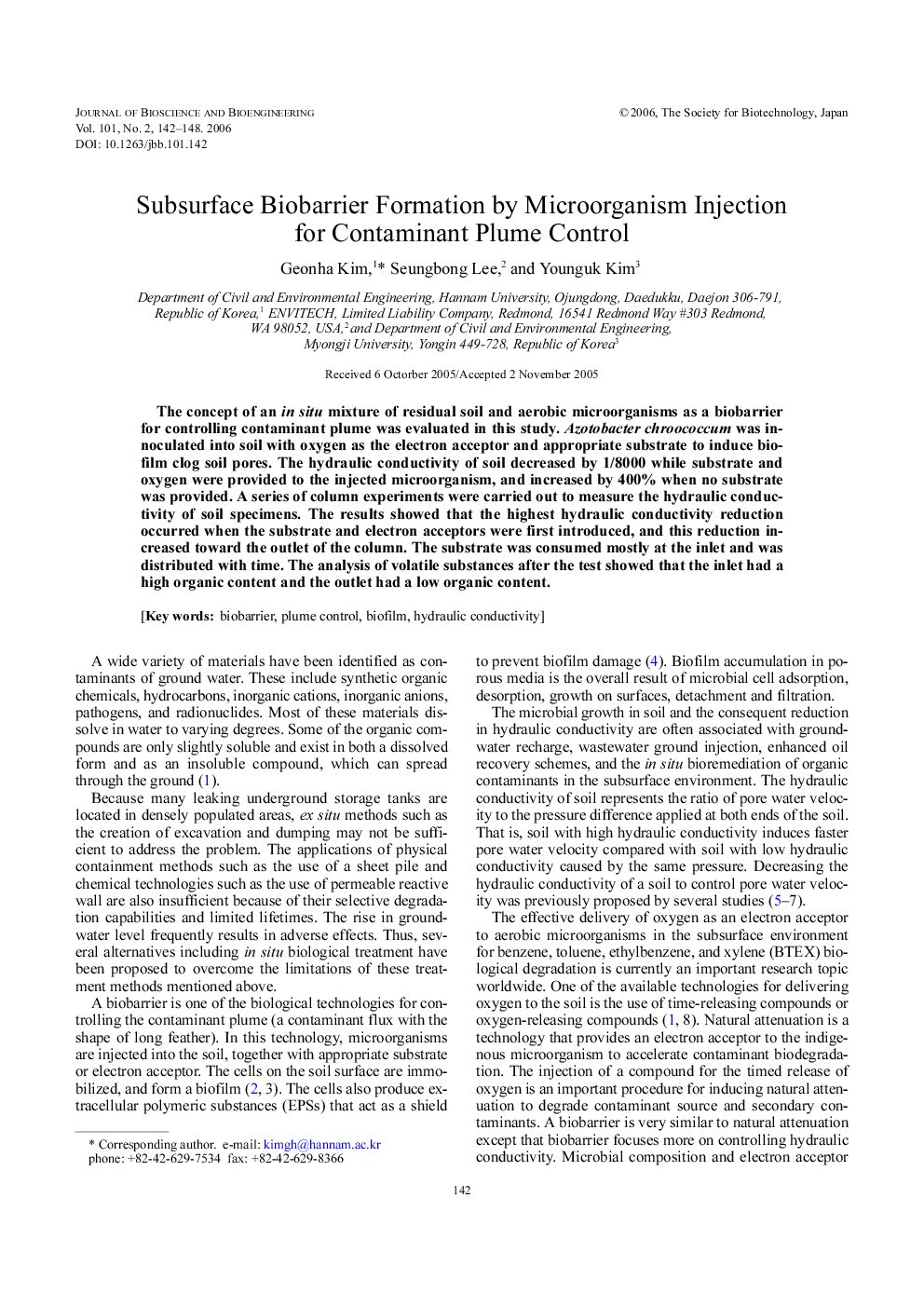| Article ID | Journal | Published Year | Pages | File Type |
|---|---|---|---|---|
| 22377 | Journal of Bioscience and Bioengineering | 2006 | 7 Pages |
The concept of an in situ mixture of residual soil and aerobic microorganisms as a biobarrier for controlling contaminant plume was evaluated in this study. Azotobacter chroococcum was innoculated into soil with oxygen as the electron acceptor and appropriate substrate to induce biofilm clog soil pores. The hydraulic conductivity of soil decreased by 1/8000 while substrate and oxygen were provided to the injected microorganism, and increased by 400% when no substrate was provided. A series of column experiments were carried out to measure the hydraulic conductivity of soil specimens. The results showed that the highest hydraulic conductivity reduction occurred when the substrate and electron acceptors were first introduced, and this reduction increased toward the outlet of the column. The substrate was consumed mostly at the inlet and was distributed with time. The analysis of volatile substances after the test showed that the inlet had a high organic content and the outlet had a low organic content.
